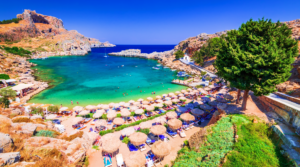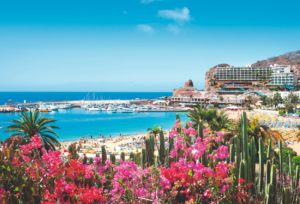Sausages come in four types. The normal one, the curly one, the chipolata and the cocktail. Battered, either as toad in the hole or from the chippy, or otherwise swimming in gravy beside a pile of mashed potato. They’re a sort of simple, wholesome staple, good for fattening up in winter and putting a smile on your face when it’s raining outside. You can’t go wrong with a decent sausage.
Our affection for the humble sausage is deep rooted and genuine, but it doesn’t really account for the full nature of this everyman’s bit of butchery. Sausages are in fact one of the most diverse and fascinating foodstuffs in the world.
While sausages are found around the globe, Europe is their true home. As the sights, smells and sounds change as you travel around Europe, the sausages will too. From the most robust blood sausage to the lightest wafer of sophisticated charcuterie, set your wanderlust alight with this, our sausage lover’s guide to Europe.
Northern Europe
It’s dark and cold and calories are important, so the sausage lends itself well to the culinary needs of Northern Europe. Sausages, encased as they are in a kind of protective skin, are ideal for preserving and being eaten throughout the year while other food sources are scarse.
We start with Finland and the mustamakkara. When it comes to this blood sausage, traditionally accompanied by lingonberry jam, size really does matter – the shape and amount of moisture change with each piece, and people are expected to choose the one they like the look of most. Mustamakkara are eaten hot and the best ones are to be found in the market stalls of the Tampere region of Finland.
Icelanders are also in possession of an interesting blood sausage. Slátur is typical of Iceland in that it uses sheep’s blood, rather than pig’s. When served with sugar, cinnamon and raisins, as is often the case, Slátur shows that Icelanders take the idea of ‘blood pudding’ rather seriously – and that dinner and dessert don’t always have to be on different plates.
Eastern Europe
Poland is the epicentre of Eastern European sausage expertise and tradition – although that claim may upset some of its neighbours. Smoking sausages is traditional and results in some of the most flavoursome examples in the world. Juniper is hugely abundant in Poland, and its smoke gives the nation’s sausages their characteristic flavour. Varieties include the kiełbaski myśliwska, or ‘hunter’s sausage’, and serdelki, a common variety you’ll find in any Eastern European supermarket.
Romania and Bulgaria also have their own rich sausage tradition. Pleșcoi sausages are unusual in that they’re made from mutton, which is due to their origin in and around the Pleșcoi village, where sheep are the predominant livestock.
The Bulgarian lukanka is a kind of salami, with a flattened cylindrical shape and often covered with a white fungus – a harmless microflora that is scraped off before eating and gives it a deep, robust flavour. Give it a try during your next holiday to this fascinating country.
Southern Europe
In this tour of the transforming climates and taste buds of Europe, it’s time to visit some of our favourite holiday destinations in the slightly more temperate south.
Italian butchers are filled with pride for their sausages, and a holiday there isn’t complete without a plate of fanned mortadella slices, accompanied by a cold beer, or even a glass of dry Lambrusco. Forget what the Americans call ‘Italian sausage’ – the variety here is among the richest in Europe and ranges from the coarsely ground cochetino Modena to the dry, salty delights of the salami.
The smaller countries of Southern Europe also have their contributions. Croatia, for example has the garlicky cešnjovka and the paprika-flavoured kulen.
Spain, the UK’s most popular holiday destination, has some of the best sausages in the world and its offerings show sausages are not just comfortable winter warmers. A beer and a board piled with chorizo, anyone?
Other Spanish delights include salchichón, best made with the gamey meat of the wild boar, and a Majorcan classic, sobrassada, the spiciness of which gives an excellent suggestion of the high notes of a Balearic Island holiday.
Western Europe
France is home to one the most unusual and perhaps off-putting of European sausages. L’andouillette de Troye is made with strips of pigs intestine, sometimes known as chitterlings, all encased in… a neighbouring area of its anatomy, shall we say. This sausage comes from the glamorous Champagne region of France – but admittedly may not have quite the same appeal.
France also has its share of cured sausages, including the saucisson de Lyon, and the very smoky saucisse de Morteau. As it happens, our beloved chipolata is also probably a product of our cousins across the channel.
And now to Germany – quite simply, the sausage capital of the world. Many others will have a claim to the title but it can’t be denied – with thousands of varieties and a presence so ingrained in its culture, Germany is where passion for sausages reaches its peak.
On your travels of course you’ll find bratwurst, blutwurst, bockwurst and bregenwurst, but also leberwurst, made with liver, and landjäger from beef, pork, lard sugar and spices. Weiβwurst is white and comes with a pretzel, leberkäse means ‘liver cheese’ and doesn’t come with liver or cheese, and zungenwurst is a blood sausage that contains everything but the squeal.
Cevelat, also found in France and Switzerland, used to be made with brains and for something really local there’s the Thuringian sausage, which enjoys the same protected status as champagne and parmesan. Then there’s the knackwurst, a garlicky and addictive treat, and, well, if you must – a currywurst is sometimes exactly what you need.
Food and holidays go hand in hand, which is why the sausage is an excellent way of looking at the wonderful variety of food cultures around Europe. Whether you’re in Bulgaria and need some calories to sustain your skiing trip, or just fancy something to nibble on as you soak up the Spanish sun, the local banger will reflect where you are. For your next trip to Europe and potential culinary adventure, have a look at our website, and see where your taste buds might take you next.






